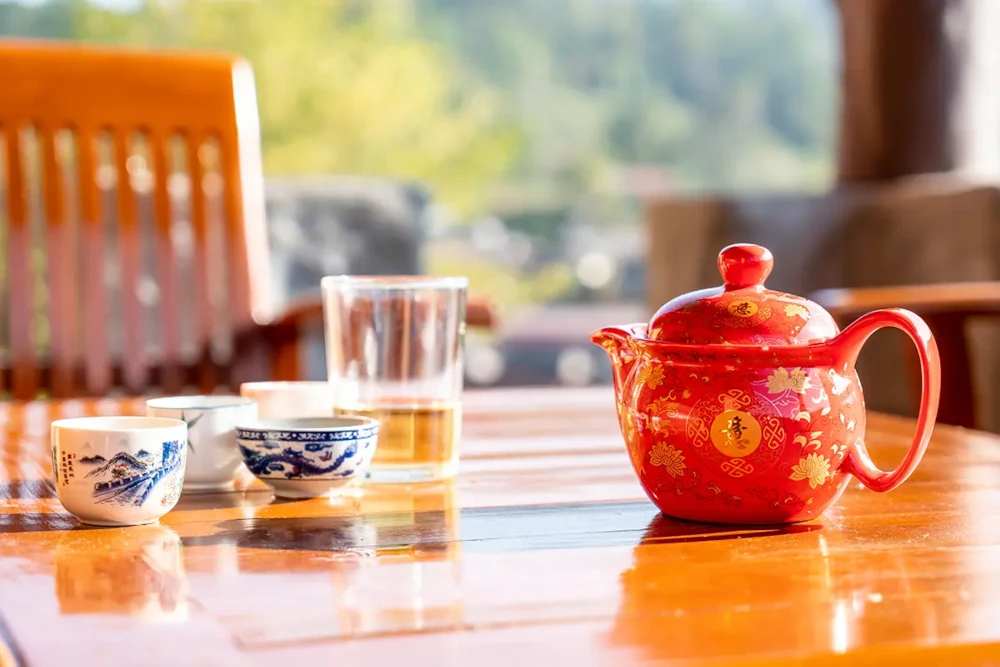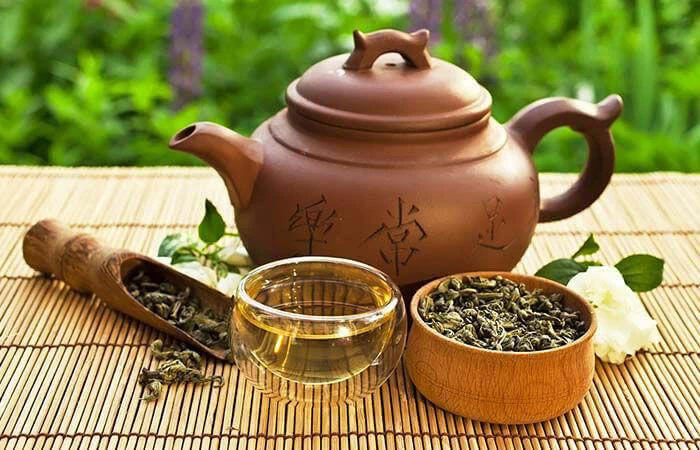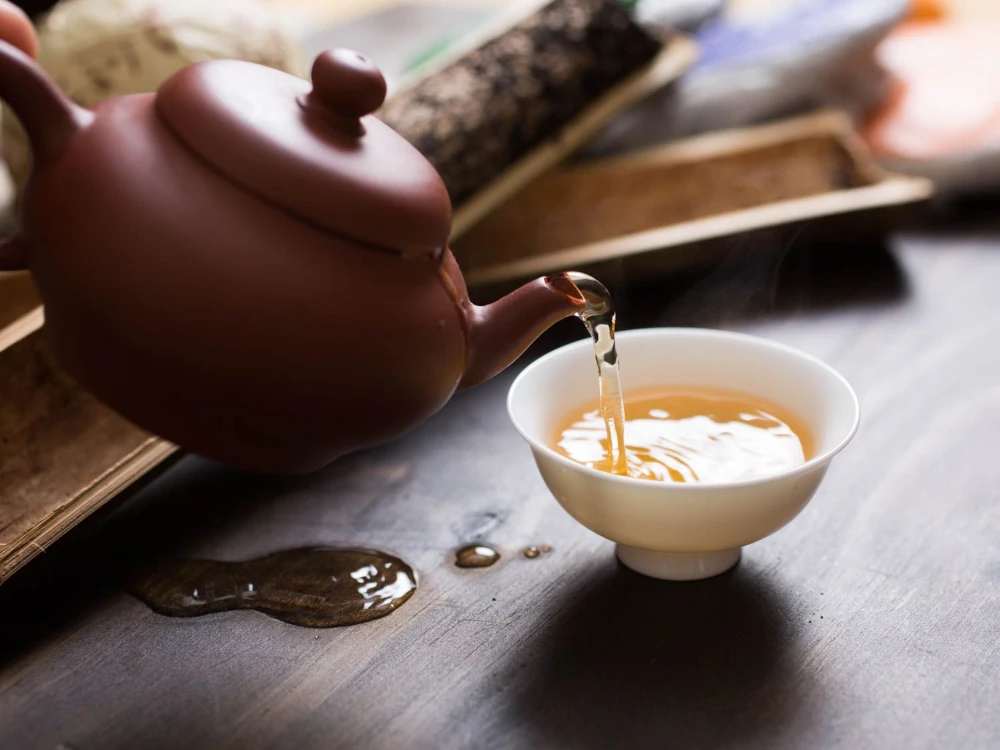What is the tea used in Chinese restaurants?

Throughout the ages, tea has become the backbone of Chinese culture. This item is utilized in the ceremonial rites to daily meals. Serving tea in Chinese restaurants is not just about serving one to drink; it has to do with something that goes much deeper in history. The teas served there-oolong, green and pu-erh-are distinguished from one another by the qualities they would bring to any experience of food.
The Role of Tea in Chinese Dining
Tea, for China, is a gesture of hospitality towards visitors and signifies respect. To offer tea was to provide a gift from a host to a guest; drinking tea is intended to encourage some socialization. Equivalent understandings of tea rest within the hospitality experience in Chinese restaurants that happily offer tea to cleanse the palate, assist digestion, and otherwise contribute to the enjoyment of the experience.
Depending on the region and personal preference, one can find different types of tea being served. There is no meal that is without tea during the course of the meal, poured down in thin streams, usually barring food, and sometimes to cleanse the teacups in the process of filling them up. The purpose here is to lend charm and enhance the mood of the dining experience.
Oolong Tea: The Most Popular Choice

Oolong tea is famous for its special richness and deep taste, one of the highest service standards for any Chinese restaurant. This tea is not fully fermented, thereby sitting in the gray area of oxidation between green and black tea. Oolong is unique because of its processing, as the bitterness imparts some sweetness to the flowers.
The rolled or twisted leaves fully unfold in steeping, releasing their flavor onto the tongue. Oolong may be praised for its smoothness and aroma, and one may describe it as the prime accompaniment to a fine dining experience in a Chinese restaurant: its subtle bitterness on the palate between courses gives one a delectable freshness that complements the heavier flavors of dim sum or roast duck.
Moreover, since it is also considered a digestion aid, Oolong is seen as a choice beverage to enjoy after any dense or oily meal.
Green Tea: A Delicate and Refreshing Option
Green tea has been commonly referred to in Chinese restaurants, where it simply possesses a simple and crisp refreshing flavor. China green tea has many varieties ranging from the more floral and sweet-tasting Longjing (Dragon Well) to those with greener and more vegetal notes like Bi Luo Chun.
Green tea has some amazing health benefits and is rich in antioxidants that aid in digestion. It is, therefore, a perfect palate cleanser for lighter dishes such as steamed fish, stir-fries, or vegetable-based dishes that sometimes have tingly flavors.
In fact, the very simplicity and purity of green tea matcha light foods beautifully and in themselves add to the food experience.
Pu-erh Tea: A Bold and Earthy Choice

Though pu-erh tea is by no means as commonly ordered as oolong or green tea, it is sometimes found on the menu in traditional Chinese restaurants or those that claim to be upscale. Pu-erh is a fermented and slightly aged tea with earthy and somewhat potent flavors; its extraordinary process of aging is quite unlike that of any other tea aging that produces the quality of mellow roundness within the tea.
At certain times when one has had a patently heavy meal, pu-erh tea would be the tea of choice, particularly in Guangdong, as it has been used to assist digestion and contend with that plain, heavy quality of much nurturing food. The strong taste is perhaps the hardest to acquire for some, but once gotten, pu-erh is a great cleaner of the palate against all heaviest interests, such as good fatty meats and spicy dishes prepared in Sichuan.
The Ritual of Tea Serving
In various Chinese restaurants, the ceremonial service of tea has been almost as important as the very tea itself. Usually, pouring tea from a small teapot into small cups is considered ritualistic and sometimes very much part of the experience. In some places, the first few pours will be discarded to “cleanse” the tea cups and leave any other impurities from the tea leaves discarded.
There may be additional tea-serving rituals in more formalities, such as using a strainer when serving the tea for it to be clear and without any loose leaves. And some restaurants practice ceremonies of “pouring tea” as part of the service and in their own fashion, pour tea while taking elaborate care and precision and sometimes accompanied by small gestures for respect or gratitude for the guest.
Conclusion
It is used within the culture not to dampen one’s tongue but to assert its own flavor and texture as tea becomes a formative dining custom rich with cultural folklore. Tea is highlighted in food: the bold, flowery notes of oolong, the fresh, light green, the deep, earthy pu-erh.
It is definitely more than a modern tradition, in fact, tea serving is said to have come a long way into the past, dating back to the very traditions of food in China. The food becomes more delicious and at the same time helps diners with refreshments while they consume food between times.
Take this tea you are having, one on the next visit at the Chinese restaurant, into consideration: its taste, its significance, and its standing in one of the oldest-known culinary traditions.
FAQs
Why is tea served before meals in Chinese restaurants?
Tea is traditionally served before meals to “wash” the palate in preparation for and digestion of the food to be served. Another reason for offering tea is to express respect and hospitality from the Chinese tradition. Thus, warm tea would soothe and comfort the guests, forming a nice segue into the meal.
May I request a special type of tea in a Chinese restaurant?
Yes; generally, in most Chinese restaurants, ordering a particular type of tea shall be fine. The green tea or the pu-erh tea or any other one of your fancy requests would be served at the set price, although oolong tea remains the standard. Whenever you have such an interest, it is advisable to ask.
Do Chinese drink tea with sugar or milk?
Usually, Chinese tea does not come with sugar or milk; one relishes and drinks it in its pure form so that the specific taste of the Chinese tea shines through. However, some restaurants might offer you sweeteners, but you wouldn’t normally have to add milk, as this would take the tea out of its original flavor.
Is there a specific way to drink tea in Chinese restaurants?
In Chinese restaurants, pouring tea into small cups ceremonially is commonly done. The first cup of tea seems to be poured out in some of these ceremonies, in a belief that it cleanses the tea leaves and the cups. It’s appropriate to sip on this tea, slowly enjoying the flavor in a not-very-rushed manner, as taking tea is often considered a leisure moment in which to reflect.
